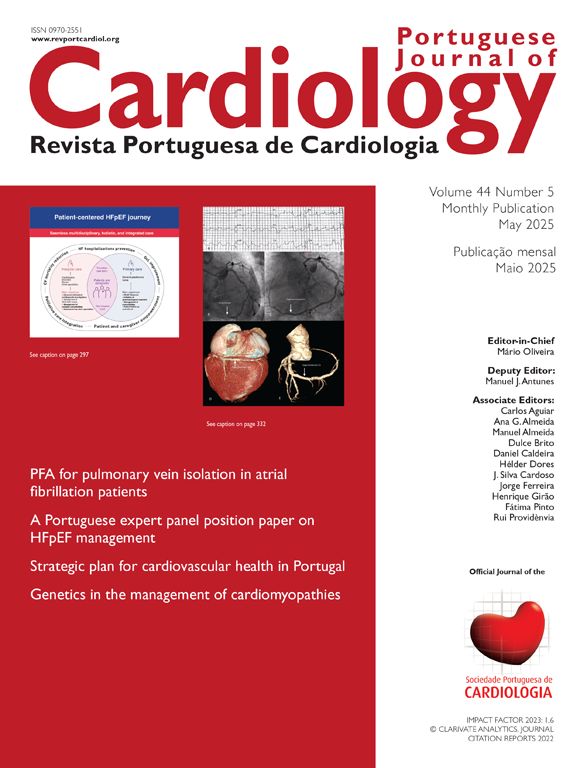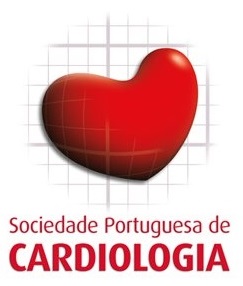I commend the authors for bringing this important topic to the table for discussion. Cardiac rehabilitation (CR) is a comprehensive, physician-supervised intervention that plays a pivotal role in managing heart failure (HF). It encompasses patient assessment, nutritional advice, psychosocial support, lifestyle and risk factor modification, and physical activity counseling. Programs that consist solely of exercise training (ET) should not be considered as CR programs.1,2
Current American and European guidelines assign CR a Class I, Level A recommendation for HF, highlighting its importance. CR should be recognized as a pillar of HF treatment, alongside pharmacological and device-based therapies.3,4 Among CR components, ET is a cornerstone, and proper prescription is essential to improve physical function, quality of life, and clinical outcomes in HF patients. ET includes a variety of modalities such as continuous aerobic training, resistance training, interval training, stretching, and functional exercises, all contributing to improvements in cardiovascular fitness, muscle strength, and symptom relief (e.g., fatigue and dyspnea).5,6
Importance of tailored exercise intensityA key factor in maximizing the benefits of CR is the appropriate prescription of aerobic exercise intensity. This must be individualized, based on each patient's clinical status and functional capacity. Cardiopulmonary exercise testing (CPET) is the gold standard for assessing cardiorespiratory fitness and determining ET intensity.1–3,6–9 Ramp protocols, characterized by gradual increments in workload, are preferred over staged protocols in CR settings. This smoother progression elicits a more linear physiological response, which facilitates the accurate identification of ventilatory thresholds (VT) and enables better delineation of training zones. Ideally, a protocol tailored to the patient's capacity should reach maximal effort within 8–12 minutes.1–3,7,8 The primary goal of CPET is to achieve a true maximal effort, typically defined by a plateau or drop in oxygen consumption (VO2) at peak exercise despite increasing workload (VO2max). In the absence of a VO2max, tests are considered near-maximal if the respiratory exchange ratio (RER) exceeds 1.10, breathing rate (BR) <15%, peak heart rate (HR) is >90% of predicted, peak lactate is >8 mmol/L (if measured) or Borg scale >18/20; in this case, VO2 at the end of the exercise period is designated as VO2peak. These criteria help guarantee reliable VO2 measurements and training prescription parameters by confirming that patients have reached or closely approached their physiological limits.1–3,7,8
From percentage-based to threshold-based prescriptionHistorically, exercise intensity was prescribed using peak-effort indicators such as % VO2peak, % of peak HR, and heart rate reserve (HRR) and its percentage (%HRR). In 2013, Mezzani et al. advocated a paradigm shift toward threshold-based prescription, grounded in physiological ventilatory thresholds 1 and 2 (VT1 and VT2), offering greater precision and individualization.3 This approach is now widely accepted. Discrepancies between threshold- and percentage-based prescriptions are well documented in several cardiovascular populations, reinforcing the need for standardization to identify training zones accurately and optimize CR outcomes.1–3,8–10
A major CPET working group highlighted the confusion surrounding the nomenclature and interpretation of the VT. While lactate thresholds (LT1 and LT2) reflect metabolic changes, VT reflect their ventilatory correlates, as captured during CPET. Terms like “anaerobic threshold” (for VT1) and “respiratory compensation point” (for VT2) are now considered inaccurate and should be avoided. “VT” terminology is currently the most accurate and widely adopted.11
Understanding ventilatory thresholdsVentilatory thresholds represent transitions between distinct metabolic states during exercise. VT1 corresponds to the onset of mixed metabolism, where anaerobic metabolism begins to supplement aerobic metabolism. It is typically detected by the V-slope method (slope of carbon dioxide production -VCO2 vs VO2 relationship) and the nadirs of the ventilatory equivalent for VO2, the ratio of minute ventilation (VE) to VO2 (VE/VO2), and end-tidal pressure (PET) for oxygen.
VT2, marking the onset of unbuffered metabolic acidosis and subsequent hyperventilation to compensate for the pH fall, is identified using the nadir of the ventilatory equivalent for CO2 (VE/VCO2) and the downward inflection in PET for CO2.
These thresholds define individualized training zones:
- •
Light to moderate: HR at VT1
- •
Moderate: HR between VT1 and VT2
- •
Intense: HR at VT2
- •
High-intensity: HR above VT2.1–3,8,12
Couto et al. retrospectively analyzed 163 HF patients across the left ventricle ejection fraction spectrum who underwent CPET. The authors compared traditional percentage-based methods (%VO2 peak, % peak HR, %HRR) obtained at the first ventilatory threshold (VT1) with threshold-based prescription and found that relying on percentage-based prescription could misclassify intensity in approximately one-third of patient.13
While these findings support the superiority of threshold-based prescription, the author's conclusions should be interpreted with caution due to methodological limitations.
- •
Maximal vs. submaximal CPETs
In this study, only 60 patients (36.8%) achieved RER >1.10, 31 (19%) achieved RER 1.05–1.10, and 72 patients (44.2%) achieved RER <1.05, indicating a high proportion of submaximal tests. Although maximal perceived exertion was documented for all patients, the objective measures suggest that peak performance may have been underestimated in this cohort.13
The relationship between VO2 and HR during CPET in HF patients is well established, with both parameters progressively increasing up to maximal effort. Experienced experts, based on insights of physiological studies, suggest that VO2 may increase till 7 mL/kg/min and HR by 20 beats during RER phase 1.00–1.05, and an additional increase of up to 5 mL/kg/min in VO2 and HR till 15 beats during the RER phase 1.05–1.10 is observed.14,15 Consequently, submaximal efforts (RER<1.10) may underestimate physiological limits and compromise accurate interpretation and exercise prescription.
Although some authors accept RER >1.05 as indicative of near-maximal tests, RER >1.10 is now the most widely endorsed criterion in international guidelines and is also supported by Portuguese recommendations on CPET published in the Portuguese Journal of Cardiology.8
Couto et al. pooled data from 91 (55.8%) maximal and near-maximal test (defined by authors with a lenient RER>1.05 criterion), alongside 72 (44.2%) submaximal test (RER<1.05).13 This decision may have compromised the validity of the conclusions, as peak VO2 and HR values certainly may not reflect maximal effort.
The authors acknowledged this limitation and performed a sub-analysis in patients with only RER >1.10, and with only RER >1.05, which yielded similar results. However, the small sample size in this subgroup limits the applicability and strength of their conclusion.
- •
CPET protocols
The testing protocols may have contributed to the high rate of submaximal effort tests. While retrospective designs do not allow for protocol modification, this reinforces the importance of selecting individualized ramp protocols in HF patients, an approach that could have increased the proportion of maximal or near-maximal efforts.3,7–9
- •
VT1 and VT2 determination
It is of particular note that the authors appear to have relied exclusively on VT1 as determined by a single medical operator during test execution, using only the VE/VO2 method. Other recommended methods – such as the V-slope and PETO2 – were not reported.1–3,8,12
Furthermore, VT2 was not systematically reported and was excluded from the analyses, making it impossible to identify the onset of high-intensity effort. Although the most limited HF patients should be trained by VT1, many HF patients can start at the VT1 level and increase their training HR till the VT2 HR, and other HF patients by interval training shifting bouts of exercise at VT1 and over VT2 HR. This was not possible to prescribe for many patients in this study population, since VT2 was not identified. This deviates from current standards for CPET execution and from best practices in threshold-based exercise prescription.1–3,8,12 Ideally, for scientific accuracy, VT1 and VT2 should have been redefined and reconfirmed (using all recommended methods) by at least two expert authors in CPET and HF exercise prescription.
- •
Beta-blockers and cardiopulmonary exercise testing validity
Finally, it is well established that beta-blocker therapy is a cornerstone of HF management, as reflected by 93% of patients in this cohort using these medications.13 Although beta-blockers can blunt HR response, they do not preclude achieving an RER >1.10 or a VO2 plateau. This is well supported by the current CPET literature and beta-blockade should not be used to justify the high prevalence of submaximal tests in a properly conducted CPET evaluation.1–3,8
Final considerationsDespite the methodological concerns outlined above, the central message remains clear: exercise prescription in CR for HF patients should be based on VT1 and VT2, as determined by CPET.
To ensure accurate threshold identification, CPET must be maximal or near-maximal (RER>1.10), performed using validated ramp protocols, and interpreted by experienced cardiologists. When properly implemented, this approach ensures that ET is both effective and safe, thereby maximizing the therapeutic potential of CR in HF populations.
Once again, I commend the authors for contributing to this important and ongoing discussion. Their findings reinforce the need for standardization, individualization, and physiological rationale in exercise prescription, an essential pillar of modern CR, particularly in HF.
Conflict of interestNone declared.



